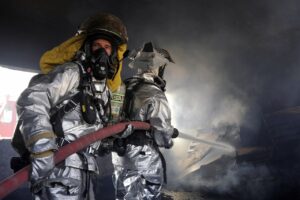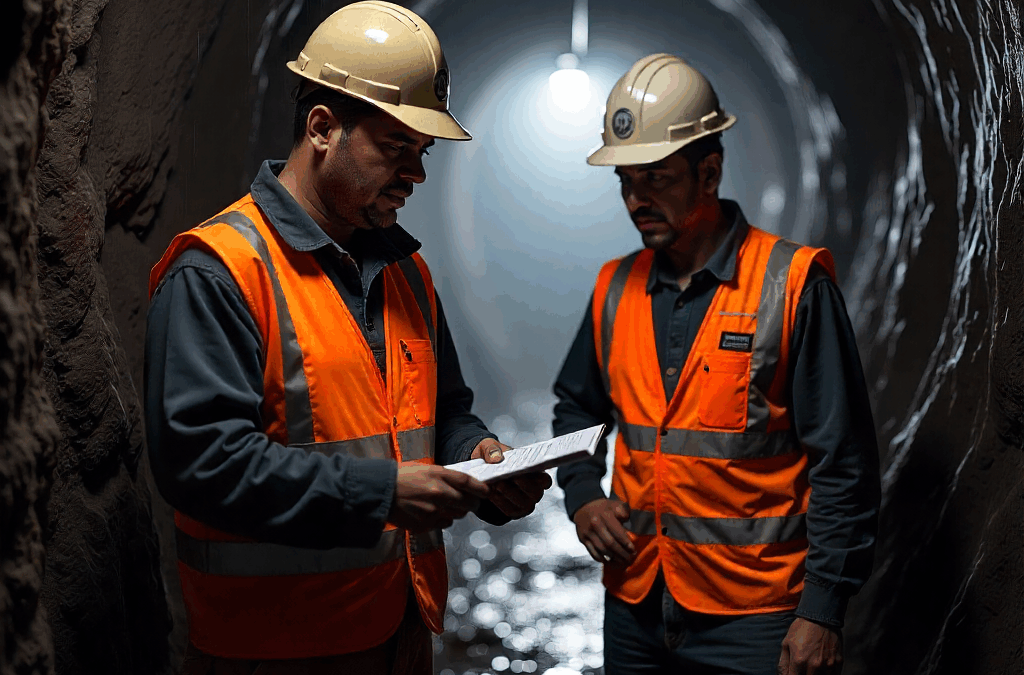Underground mining operations present unique and often hazardous challenges, with fire and toxic gas accumulation ranking among the most hurtful threats to miner safety. In such high-risk environments, emergency ventilation control becomes a life-saving necessity, working hand-in-hand with comprehensive fire management strategies to prevent disasters and ensure rapid response when incidents occur.
From managing battery safety and fire prevention to complying with strict MSHA guidelines for combustible waste, equipment, and refueling, mining operators must take a multi-layered approach to risk mitigation. This article explores the key systems, standards, and practices that form the backbone of underground mine safety, with a focus on how proactive planning and advanced technologies can save lives.
The Importance of Ventilation in Underground Mine Safety
In underground mines, ventilation is everything. Without it, the air can become filled with toxic gases, dust, and heat—all of which can harm or kill workers. Proper ventilation systems bring in fresh air, dilute hazardous gases, and push out contaminants. In case of fire, ventilation helps clear smoke, giving miners more time to escape safely. That’s why emergency ventilation control and fire management must be a top priority.
How Fires Start and Spread in Underground Mining Operations
Fires in underground mines often begin from equipment malfunctions, electrical faults, or flammable materials. A small spark can ignite oil, coal, or grease. Once started, the fire spreads rapidly due to confined airways and heat buildup. Even non-flammable materials can catch fire when temperatures rise. Effective fire management requires stopping the fire early and having systems in place to contain it.
MSHA Guidelines for Combustible Waste, Equipment, and Refueling
The Mine Safety and Health Administration (MSHA) has strict rules to prevent underground fires. These include proper disposal of combustible waste, regular equipment checks, and safe refueling practices. MSHA requires that fuel be handled in ventilated areas and that machinery is turned off during refueling. Faulty equipment must be fixed immediately to avoid fire risks. Complying with MSHA guidelines is crucial for underground safety.
Battery Safety and Fire Prevention in Mining Operations
With electric vehicles and battery-powered equipment becoming common in mining, battery safety is a growing concern. Battery fires can start from overheating, overcharging, or physical damage. In underground settings, these fires can spread fast. Using certified battery systems, following manufacturer instructions, and maintaining proper ventilation reduce the risk. Fire prevention measures like thermal monitoring and automatic suppression systems are important.
Types of Emergency Ventilation Systems Used in Mines
Underground mines use several types of emergency ventilation systems. These include:
- Primary ventilation systems, which bring fresh air into the mine.
- Secondary ventilation systems, which direct air to specific working areas.
- Emergency auxiliary fans and ducts, used during fire events to redirect smoke.
- Positive pressure systems that push air into refuge chambers.
Having the right mix of these systems ensures that air keeps flowing, even during a crisis.
Controlling Smoke and Toxic Gases During Underground Fires
Smoke and toxic gases are among the deadliest threats during mine fires. They spread quickly, reduce visibility, and can overwhelm breathing. Proper ventilation systems help move smoke away from escape routes and reduce the buildup of dangerous gases. Gas sensors and alarms can provide early warnings. Seals and stoppings can also redirect airflow to isolate the fire and protect workers.
Key Components of an Effective Mine Fire Management Plan
A good fire management plan includes:
- Risk assessment and fire prevention strategies
- Emergency evacuation routes
- Fire detection and suppression systems
- Real-time communication tools
- Regular drills and updates
Each mine must customize its plan based on its layout, materials, and equipment. Clear communication, strong leadership, and regular reviews help ensure the plan works when it matters most.
Designing Safe Escape Routes and Refuge Chambers
Safe escape routes and refuge chambers can save lives. Escape routes must be marked, lit, and regularly inspected. Refuge chambers provide a safe space with clean air, food, and water when escape isn’t possible. These chambers should be pressurized, fire-resistant, and equipped with communication tools. They must be located strategically so workers can reach them quickly during an emergency.
Real-Time Monitoring and Automation in Fire and Ventilation Control
Modern mines rely on automation and real-time monitoring to manage fire and ventilation risks. Systems can detect smoke, heat, or gas levels instantly. When danger is detected, automated fans and dampers activate to redirect airflow. Operators can monitor and control ventilation remotely, improving response time. Integrating sensors and AI can make emergency ventilation control more reliable and efficient.
Training Miners for Emergency Ventilation and Fire Scenarios
Training is one of the most powerful tools in fire and ventilation safety. All miners must know how to respond to fires, locate escape routes, and use breathing equipment. Drills should simulate real emergency scenarios. Teams must also learn how to activate and manage emergency ventilation systems. Regular training keeps skills sharp and builds confidence in high-stress situations.

Regulatory Standards for Fire and Ventilation Systems in Mines
Mining regulations set the baseline for fire and ventilation safety. These include standards from MSHA, OSHA, and international bodies. Regulations cover equipment inspections, air quality levels, fire-resistant materials, and emergency preparedness. Mines must not only meet but exceed these standards to ensure true safety underground. Staying up to date with changing rules is essential.
Strengthening Fire and Ventilation Readiness Underground
Underground fires can happen fast—but preparation saves lives. Emergency ventilation control and fire management in underground mines is about more than meeting regulations. It’s about protecting every miner, every shift. By investing in training, automation, proper equipment, and strong planning, mines can reduce risks and build a safer future.

